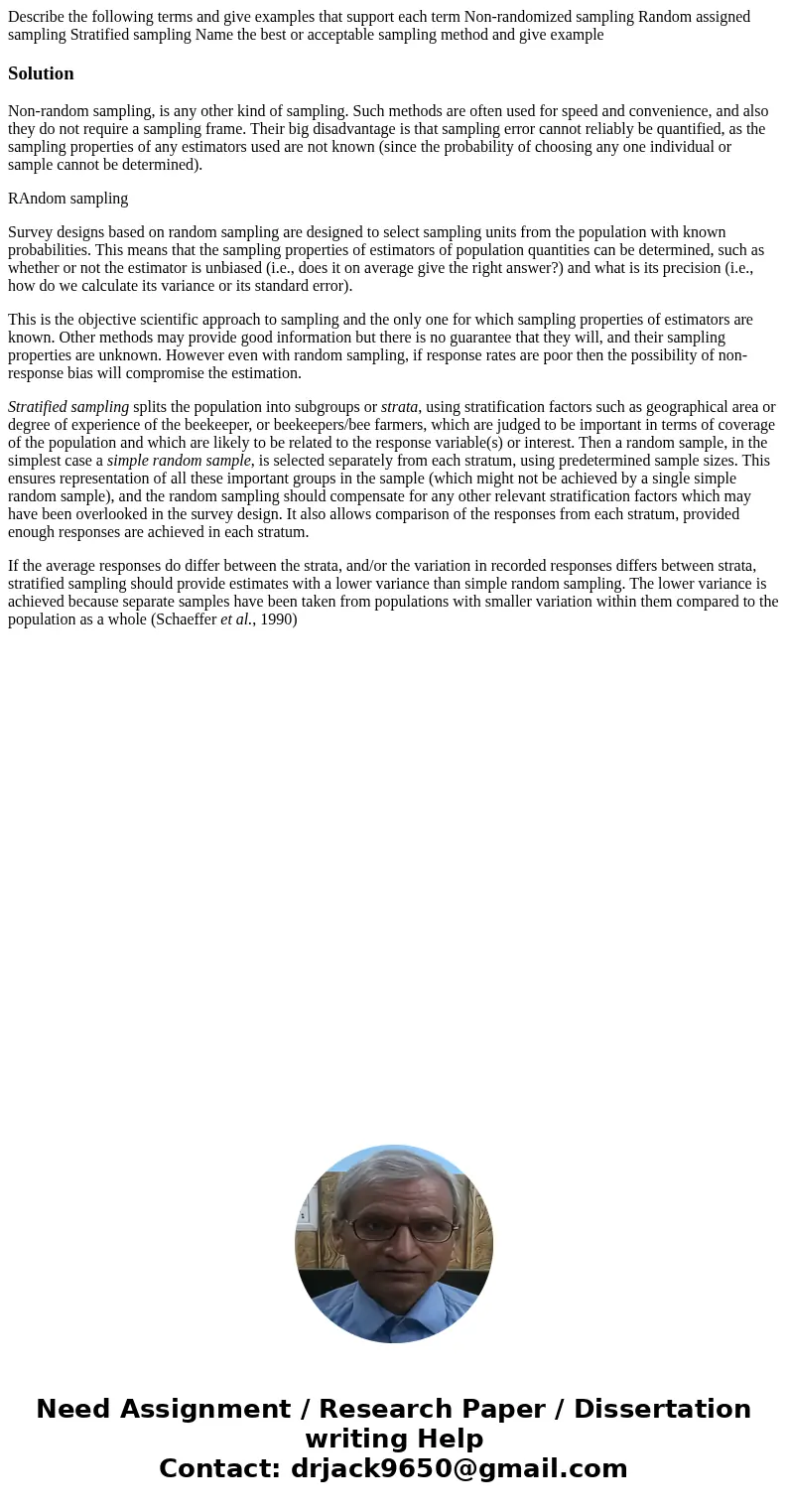Describe the following terms and give examples that support
Solution
Non-random sampling, is any other kind of sampling. Such methods are often used for speed and convenience, and also they do not require a sampling frame. Their big disadvantage is that sampling error cannot reliably be quantified, as the sampling properties of any estimators used are not known (since the probability of choosing any one individual or sample cannot be determined).
RAndom sampling
Survey designs based on random sampling are designed to select sampling units from the population with known probabilities. This means that the sampling properties of estimators of population quantities can be determined, such as whether or not the estimator is unbiased (i.e., does it on average give the right answer?) and what is its precision (i.e., how do we calculate its variance or its standard error).
This is the objective scientific approach to sampling and the only one for which sampling properties of estimators are known. Other methods may provide good information but there is no guarantee that they will, and their sampling properties are unknown. However even with random sampling, if response rates are poor then the possibility of non-response bias will compromise the estimation.
Stratified sampling splits the population into subgroups or strata, using stratification factors such as geographical area or degree of experience of the beekeeper, or beekeepers/bee farmers, which are judged to be important in terms of coverage of the population and which are likely to be related to the response variable(s) or interest. Then a random sample, in the simplest case a simple random sample, is selected separately from each stratum, using predetermined sample sizes. This ensures representation of all these important groups in the sample (which might not be achieved by a single simple random sample), and the random sampling should compensate for any other relevant stratification factors which may have been overlooked in the survey design. It also allows comparison of the responses from each stratum, provided enough responses are achieved in each stratum.
If the average responses do differ between the strata, and/or the variation in recorded responses differs between strata, stratified sampling should provide estimates with a lower variance than simple random sampling. The lower variance is achieved because separate samples have been taken from populations with smaller variation within them compared to the population as a whole (Schaeffer et al., 1990)

 Homework Sourse
Homework Sourse